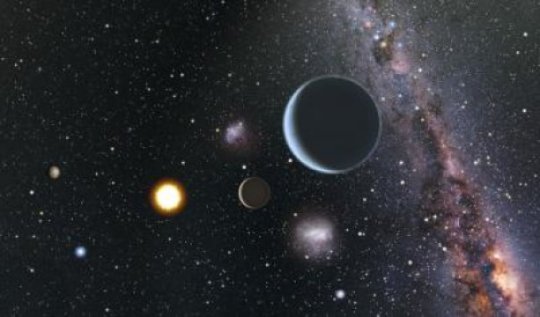
Credit: Karen Teramura & BJ Fulton, University of Hawaii, Institute for Astronomy
 Copyright © Michael Richmond.
This work is licensed under a Creative Commons License.
Copyright © Michael Richmond.
This work is licensed under a Creative Commons License.
NASA's budget request for FY 2016 may have some impact on exoplanet research in the near future.
Three Super-Earths Orbiting HD 7924. Previously known to host one planet, this star is now seen to have three planets around it.

Credit: Karen Teramura & BJ Fulton, University of Hawaii,
Institute for Astronomy
Information about Automatic Planet Finder (APF) from the Lick Observatory
The APF is also known as the "Rocky Planet Finder" (RPF) It's a 2.4-m telescope, but its dome and building are much smaller than you might imagine. Can you find it on this picture of the telescopes at Lick Observatory?
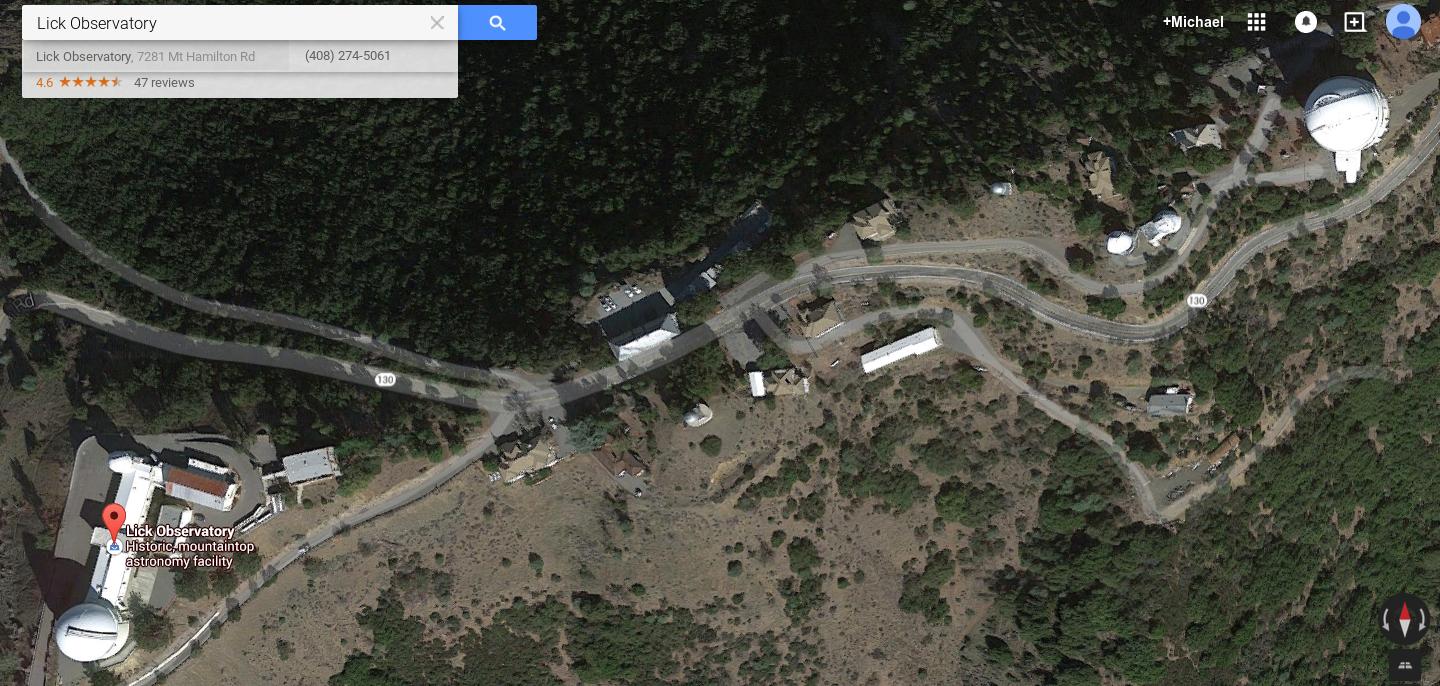
Evidence for a spectroscopic direct detection of reflected light from 51 Pegasi b is the first spectrum of an exoplanet taken at visible wavelengths. You can find a copy of the paper on arXiv, too.
51 Peg b is a hot Jupiter with a period of 4.2 days and a mass of about 0.5 Jupiter.
This was a tough job. The ESO 3.6-m telescope at La Silla and its HARPS instrument collected data on a number of nights:
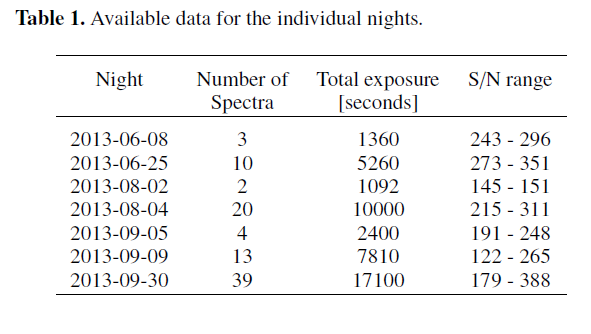
Table 1 taken from
Martins et al., A&A 576, 134 (2015)
On each night, the planet was in a different location in its orbit -- so the reflected light from the planet had a slightly different Doppler shift. The authors had to shift the measurements from each night by exactly the amount required to bring the planetary signals to the same wavelength, and THEN add them together to increase the signal-to-noise. (And yes, I'm simplifying)
Q: What would be the best point in the orbit
to observe the star-plus-planet?
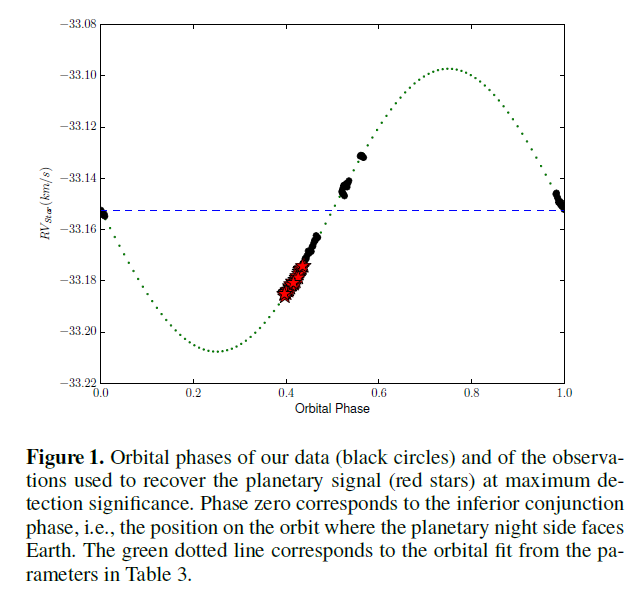
Figure 1 taken from
Martins et al., A&A 576, 134 (2015)
The researchers also made a set of observations when the planet was NOT expected to provide much signal.
Note that the scientists didn't actually know EXACTLY what the orbital velocity of the planet was. Therefore, they co-added spectra using orbits with a variety of velocities, and looked for the best fit to reveal the (likely) actual orbital velocity.
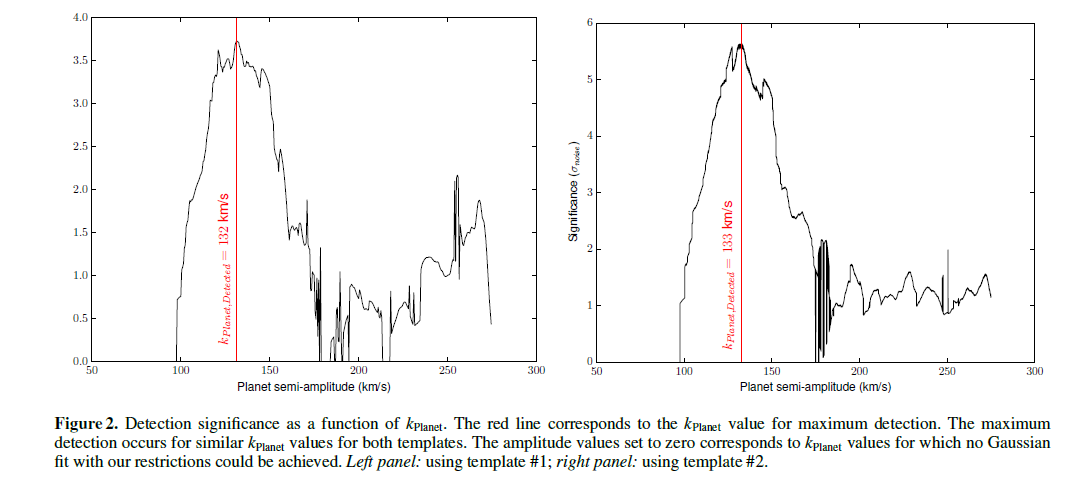
Figure 2 taken from
Martins et al., A&A 576, 134 (2015)
Note the difference between looking where a signal should NOT appear ....
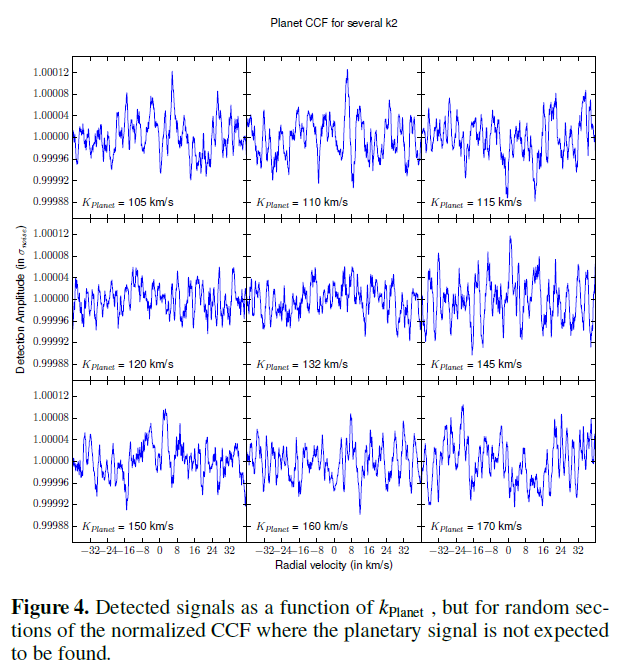
Figure 4 taken from
Martins et al., A&A 576, 134 (2015)
And where a signal SHOULD appear ...
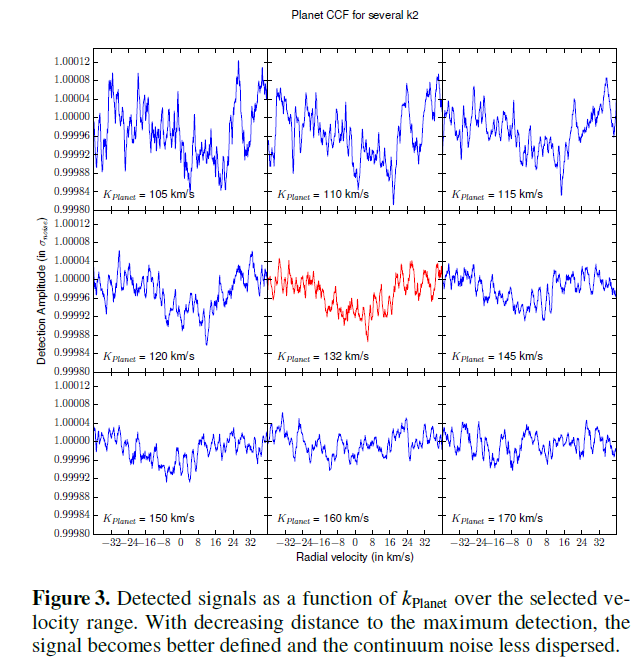
Figure 3 taken from
Martins et al., A&A 576, 134 (2015)
So what's the big result? The big result is ... that astronomers were able to detect the reflected light from the planet. They did gain a bit of extra information about the planet and its orbit by comparing their results with those from radial velocity measurements.
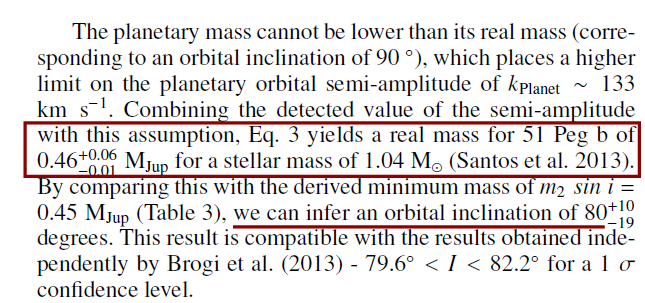
Taken from
Martins et al., A&A 576, 134 (2015)
PyTransit: Fast and Easy Exoplanet Transit Modelling in Python describes a freely-available software package which makes it easier to run a pair of existing mathematical models on sample data.
The code is a mixture of Fortran and IDL, and can be retrieved from
with examples and tutorials at
Extrasolar Binary Planets II: Detectability by Transit Observations discusses the question -- what would a transit by a binary planet look like?
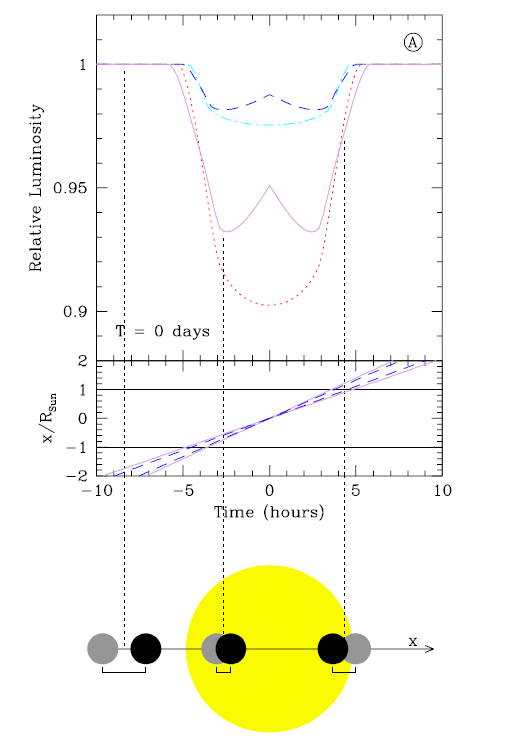
Figure 2 taken from
Lewis, Ochiai, Nagasawa and Ida (ApJ, accepted, 2015)
Actually, there are quite a few possibilities, because the two planets are orbiting around each other as they pass in front of the star.
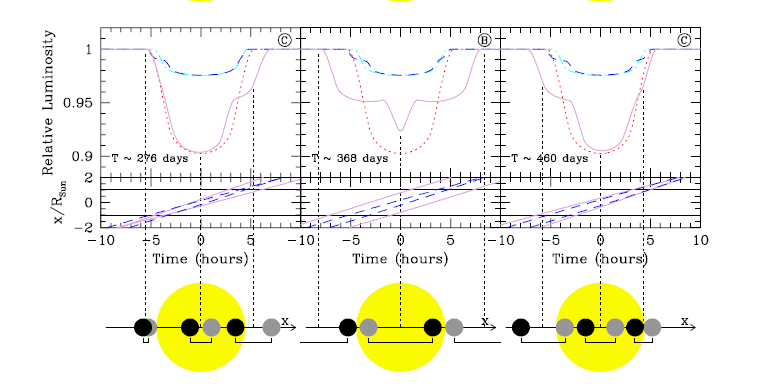
Part of Figure 3 taken from
Lewis, Ochiai, Nagasawa and Ida (ApJ, accepted, 2015)
Are there any observations of such binary planets? Maybe. Consider this case, CoRoT SRc01 E2 1066:
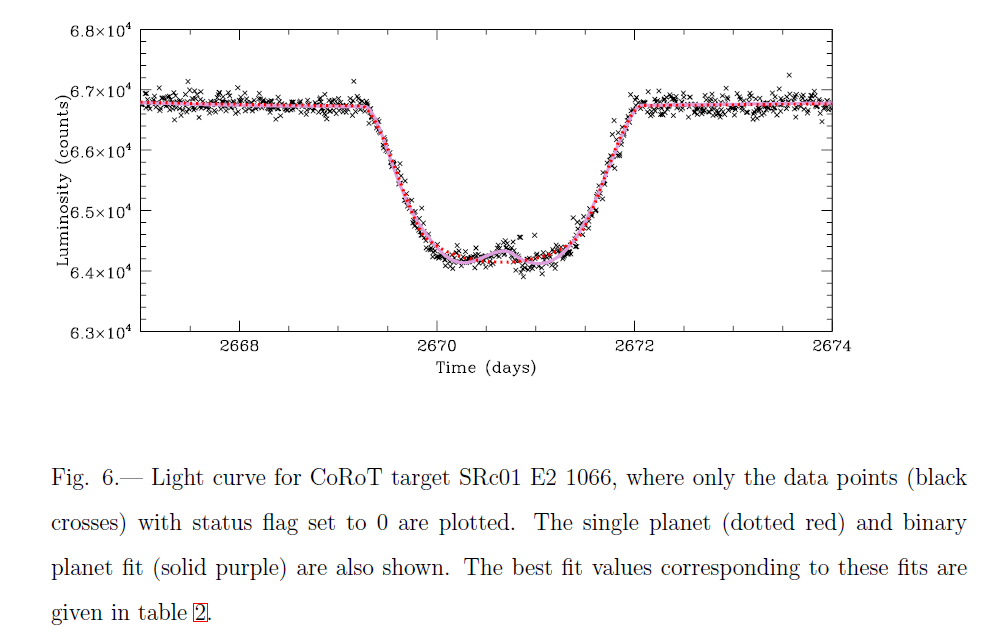
Figure 6 taken from
Lewis, Ochiai, Nagasawa and Ida (ApJ, accepted, 2015)
Now, as a test of the model and the software used to fit it to data, the authors look at the star Kepler KOI-126. This is not a binary planet, but instead a triple-star system in which two little stars in a close pair orbit around one big star. Same idea, just different actors. Shown below are six transits from the system: black crosses = data, single-transitting-star fit = red dashed line, double-transitting-star fit = purple line.
Note how the shape of the dip changes from one transit to the next.
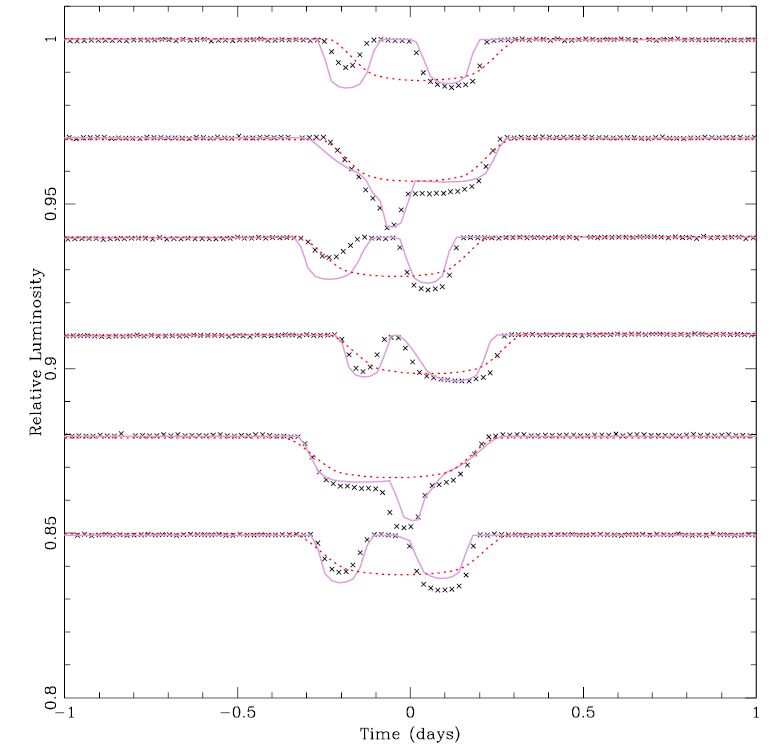
Figure 7 taken from
Lewis, Ochiai, Nagasawa and Ida (ApJ, accepted, 2015)
 Copyright © Michael Richmond.
This work is licensed under a Creative Commons License.
Copyright © Michael Richmond.
This work is licensed under a Creative Commons License.